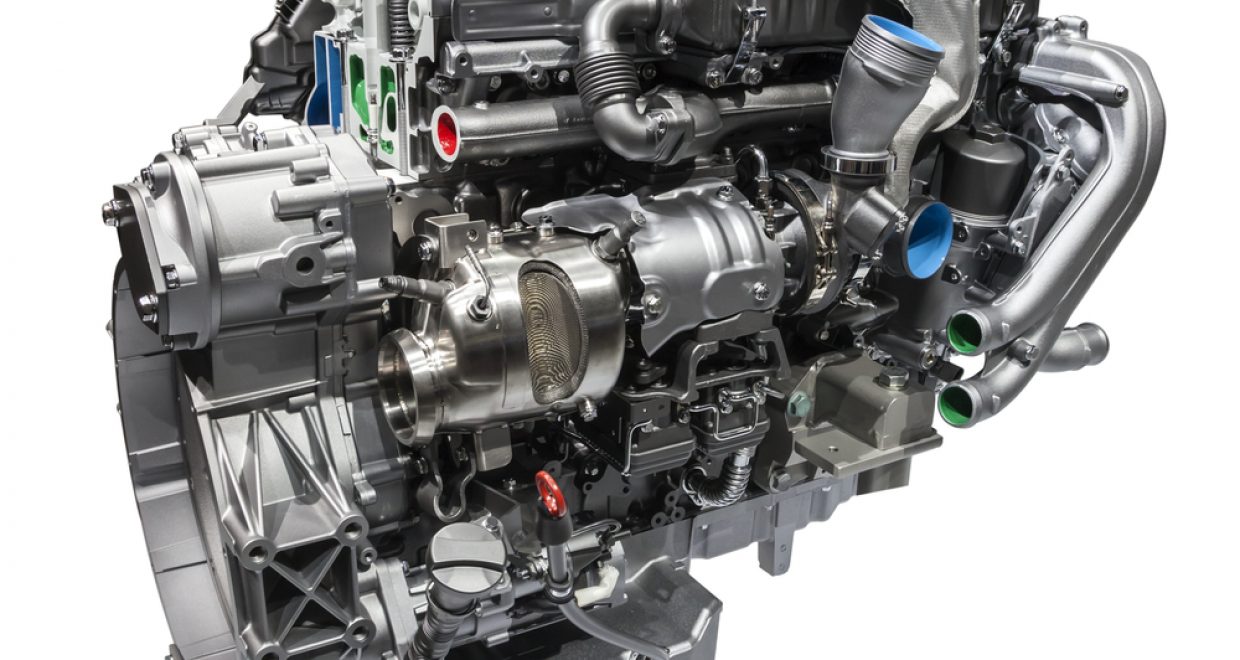Building cleaner diesel engines
Or: How to start a fire
Fuel inside an engine is subjected to high temperatures and pressures causing it to ignite and burn, but what exactly is the process by which this occurs? A new study published in JFM combines the thermochemical conditions of a diesel engine with realistic 3D turbulence models to provide an insight into the inner workings of a combustion engine.
Diesel engines are incredibly common worldwide, from their use in personal vehicles to heavy machinery on an industrial scale. With steps being taken to help to reduce our reliance on fossil fuels they are becoming less common. However, current electric motors are not yet able to provide the high power and energy density required by heavy goods vehicles. This means that while they are still in use, understanding more about the combustion process within a diesel engine is essential if we are to improve the efficiency and reduce the pollution generated by these engines.
With this goal in mind, lead author Alex Krisman and his team wanted to simulate the engine environment at a pressure of 40 atm and a temperature of 1100 Kelvin with realistic models for both the chemistry and the turbulence generated by the ignition process. They concentrated on very small-scale structures at the sub-micron scale which exist for fractions of a millisecond as this is where they believe the key physics and chemistry occurs.
Their simulations showed that ignition begins with low temperature chemistry (LTC) which precedes the formation of spatially localised high temperature chemistry (HTC) events known as ‘kernels’. The kernels form in what Krisman described as “areas protected from intense turbulence” with the idea being that in these areas the eddies are shielded from heat and energy dissipation, thus enabling ignition to occur.
Once ignited, the initial ‘edge flames’ grow and self-propagate throughout the fuel, spreading out from their initial starting point. Another mechanism called ‘auto-ignition’ is also present, whereby the chemical substance spontaneously ignites without an external source. An example image of the instantaneous temperature field is displayed below with the areas of low temperature chemistry (LTC) and edge flames labelled.

Experimentally the ignition process is very difficult to measure accurately due to the extremely small length and time scales present. However, recent progress has been made using laser techniques, and the data available show reasonable agreement with the simulations. In particular, regions of both low and high temperature chemistry can be identified and the propagation of edge flames can also be inferred as predicted by the numerical model.
With continued improvement in both experimental measurement techniques and numerical simulations of the ignition process, Krisman hopes that such models will allow for better design of diesel engines to help reduce the amount of toxic gases and soot produced and thus comply with ever more stringent regulations. “The advantage of using DNS is that it tells us which kinds of physics and combustion are present and therefore industry-scale simulations which need to be run on a much shorter timescale can concentrate only on the most important physics relevant to the problem.”
Ultimately, Krisman believes that combustion is highly complex and is, therefore, very challenging to model. “Some parts of the process are driven by chemical effects such as auto-ignition, whereas others are driven by turbulence and flame propagation which all have different physics.” In other words, careful thought is needed going forward.
This paper is freely available through 6th August.
References:
Krisman, A., Hawkes, E., & Chen, J. (2017). Two-stage auto-ignition and edge flames in a high pressure turbulent jet. Journal of Fluid Mechanics, 824, 5-41.







Thanks for this interesting post!
I have a question about your analysis of electric motors vs diesel engines. Surely it’s not true that electric motors cannot produce the high power required by heavy good vehicles? For example Northrop Grumman have built an electric motor to power ships which generates 49,000 horsepower, and a Swiss company built an electric motor for a NASA wind tunnel which develops 135,000 horsepower, more than enough to power a truck. As you mention, the real impediment is the energy density of batteries, which while constantly improving, is not yet high enough for heavy vehicles.
Given the challenges in making diesel engines cleaner, it will be interesting to see if electric propulsion develops faster than the ability to clean up diesel, and which technology eventually wins the commercial vehicle race.
Hi Tris,
Thank you for your comment. This reply is from the author of the article, Alex Krisman.
‘I think the commenter has a point regarding the power density argument. I think that what’s happened is a couple of points have been merged together in the blog post, which may very well have been directly based on something erroneous that I said – if so, apologies. For electric power trains driven by batteries, like a Tesla car, both the article and the commenter are correct that it is the energy density of the ‘fuel’ (i.e. the battery) which is limiting. However, there are other alternative power trains where the power density may also be limiting, which is more a function of how much power can be delivered per unit volume rather than energy storage per unit volume. A silly example of this would be a solar-powered drive train – you just can’t pack enough cells on a truck to deliver the required power, regardless of the power density of the electric motor itself. A more realistic example is fuel cell technology, which seems to be making some good improvements in recent years but still seems to be far from cost competitive with diesel.’
Thanks again for your comment!
Jesse